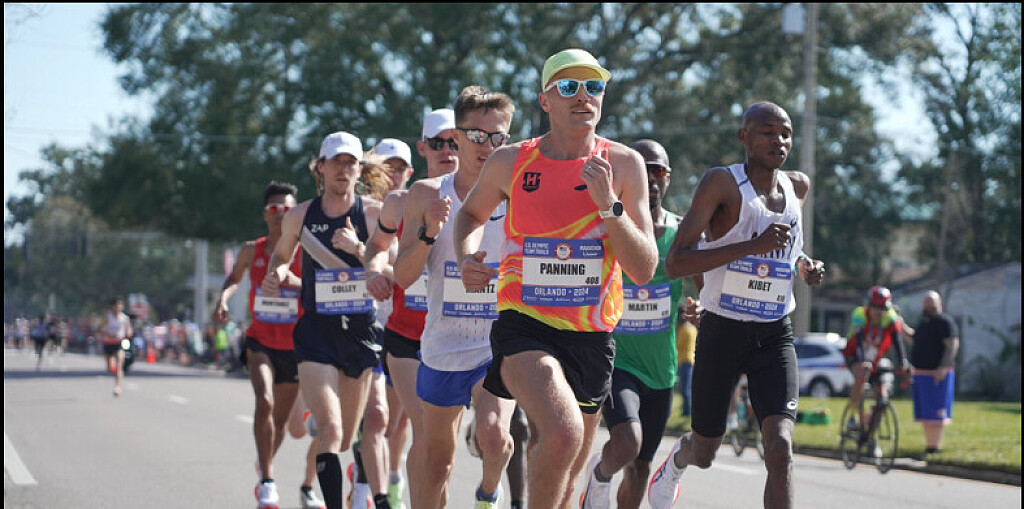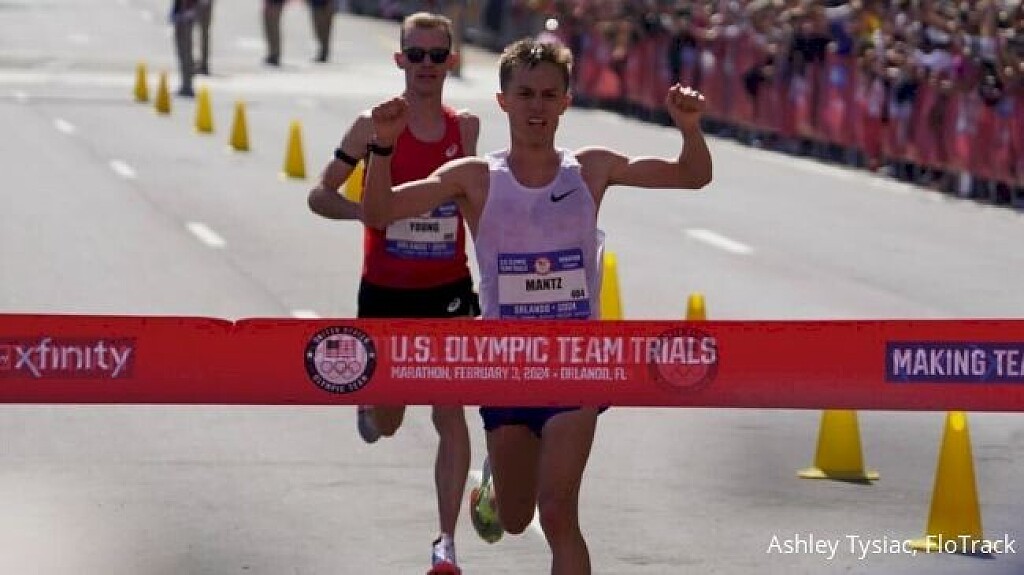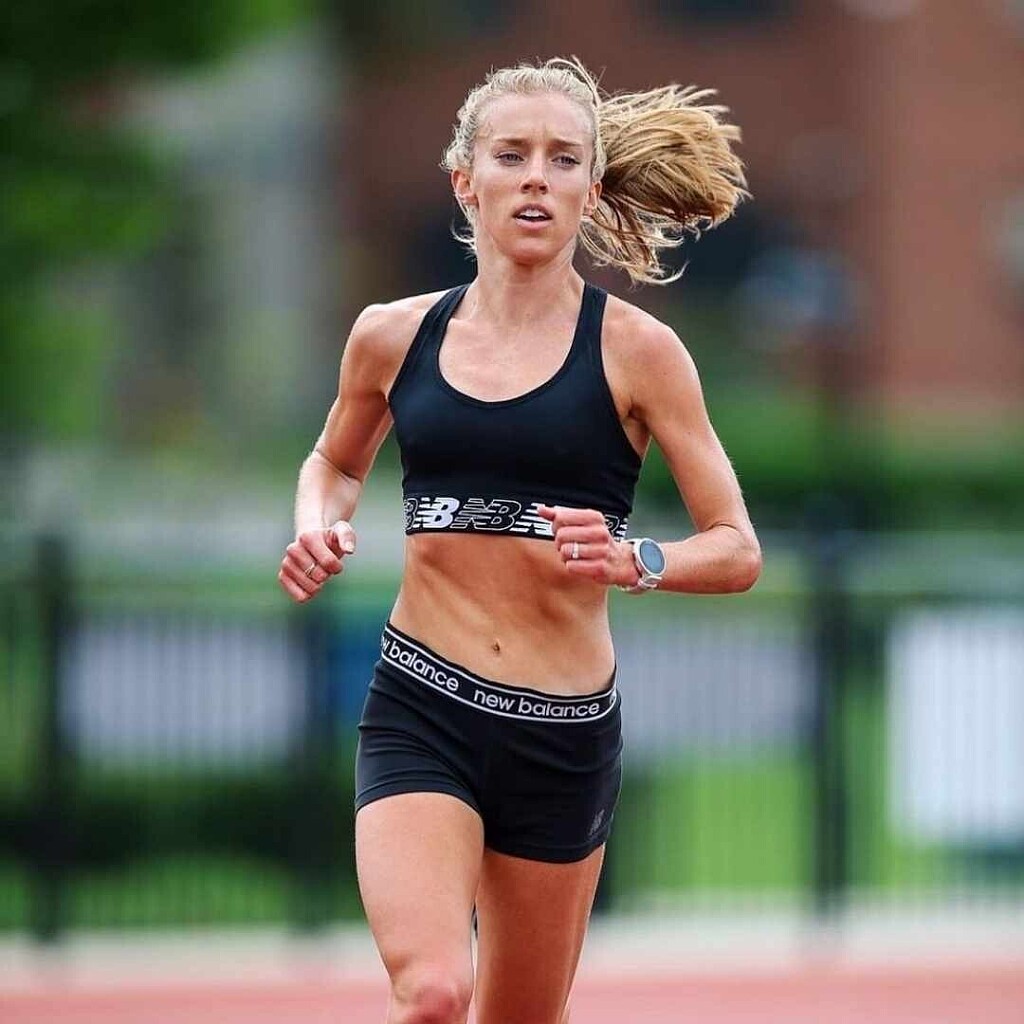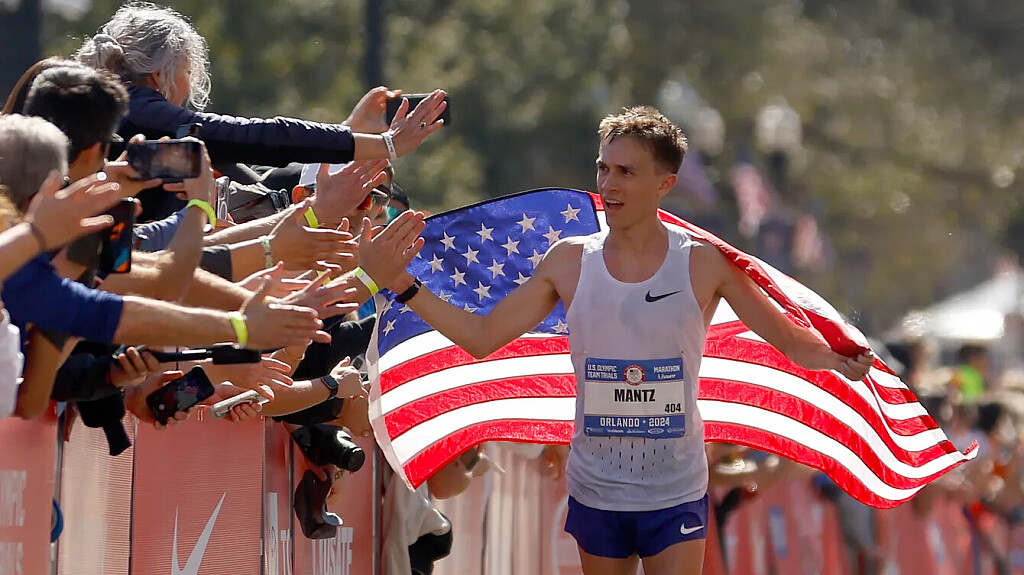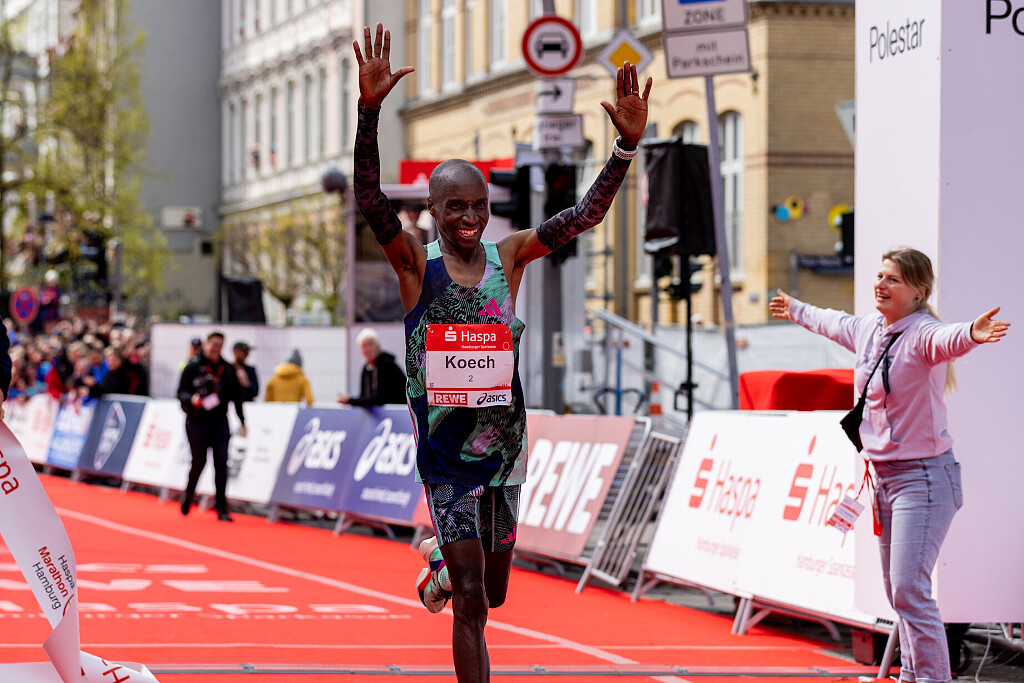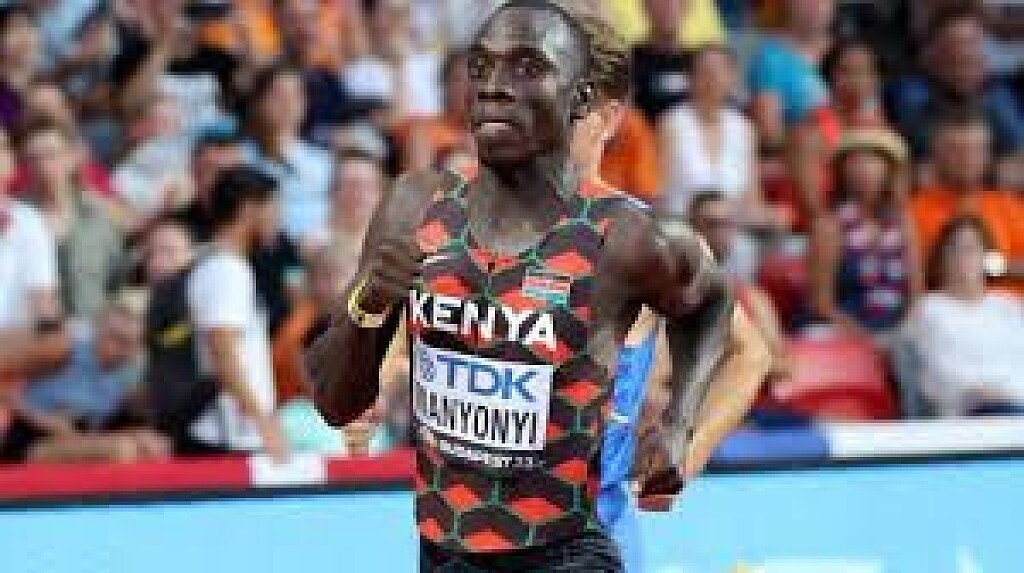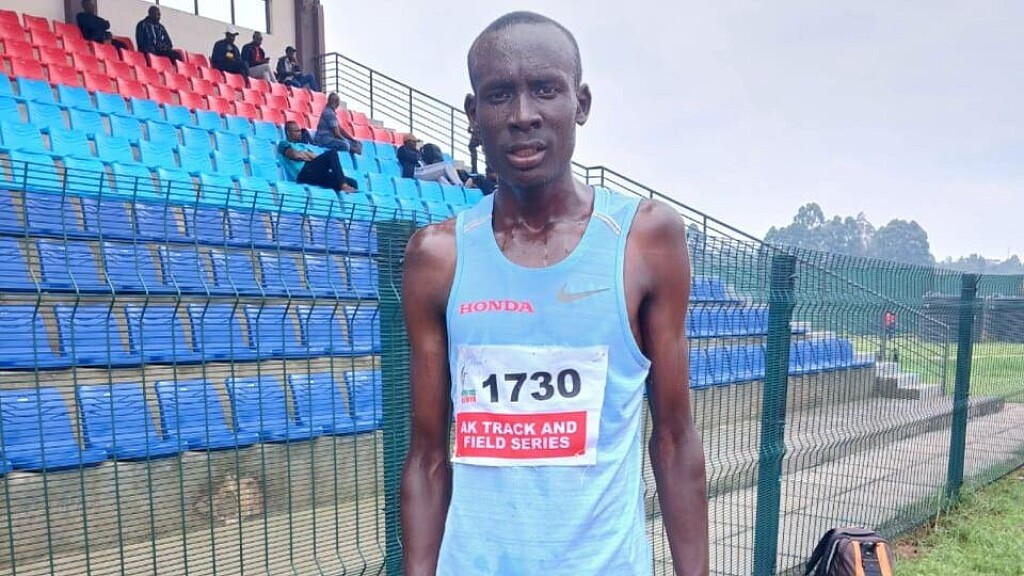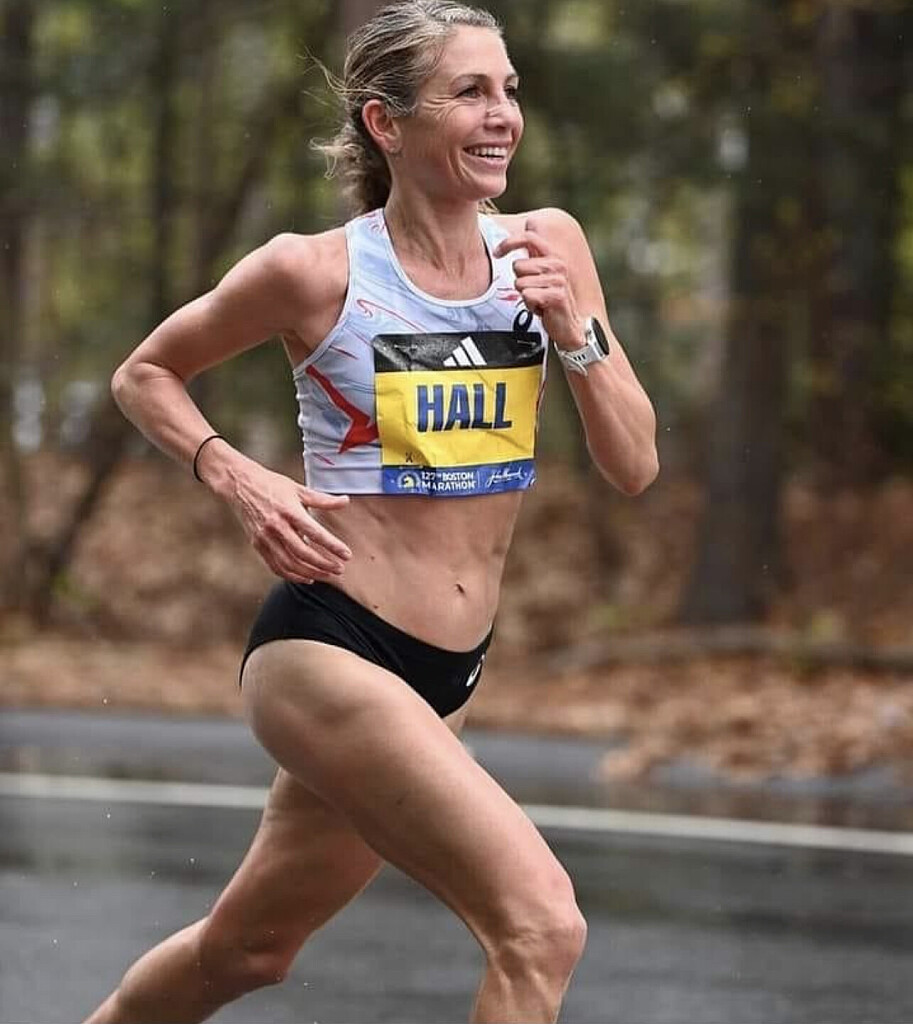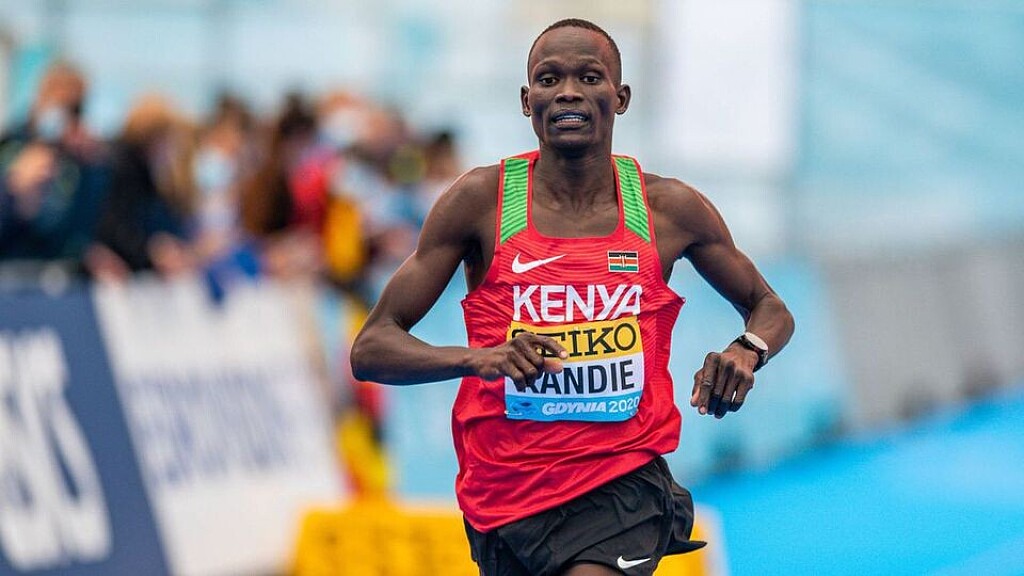Running News Daily
Top Ten Stories of the Week
2/10/2024
These are the top ten stories based on views over the last week.
These were the Fastest Shoes of the 2024 Olympic Marathon Trials
Asics, Puma, and Nike had a big day.
The city of Orlando witnessed some amazing performances under a blistering sun, with tickets to Paris at stake. When the dust settled after three loops, six brands placed among the top 10 men’s and women’s finishers. There was a time Nike ruled the roads, but Asics topped them in this year’s Olympic Trials Marathon, with two men and four women making my list below.
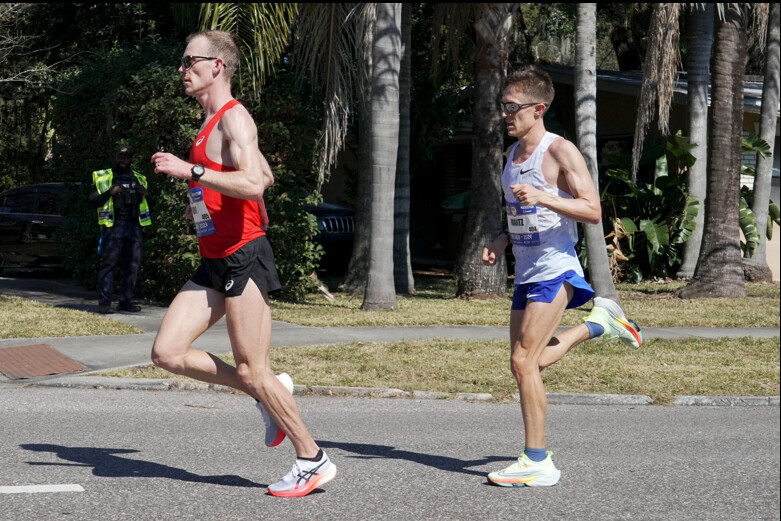
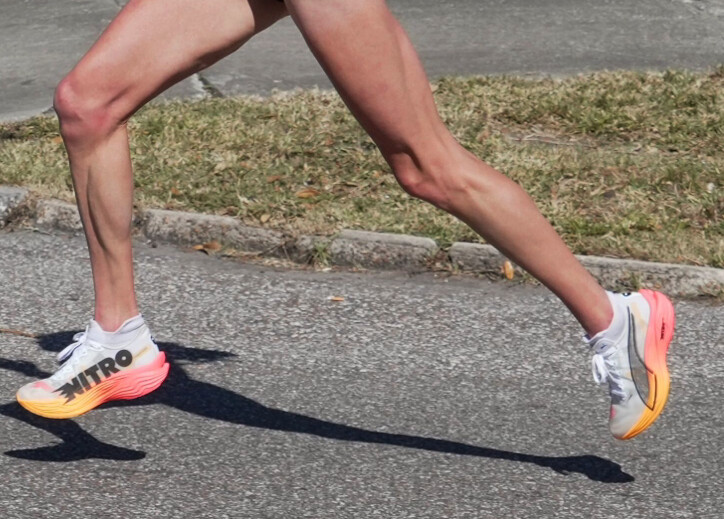
Here’s a look at what the top 10 finishers in both races wore in their quests for a spot on the Olympic team.
MEN’S TOP 10
1st — Conner Mantz, 2:09:05
Nike Air Zoom Alphafly Next% (v1)
Despite two updates to the Alphafly, Mantz (right in the image above) continues to wear the very first version. If it ain’t broke, don’t fix it.
2nd — Clayton Young, 2:09:06
Asics Metaspeed Sky 3 prototype
Young (left, above) looks to be wearing the newest, unreleased Metaspeed Sky. Asics has three “development” shoes (prototype) approved by World Athletics for use in competition, currently. This colorway looks a lot like the existing Metaspeed Sky+ and Edge+, but when we zoom in closer we don’t see any labels, and the sidewall of the midsole looks different than the shoe you can buy now.
3rd — Leonard Korir, 2:09:57
Nike Air Zoom Alphafly 3
Korir laced up the latest Alphafly and might just have run himself onto the squad headed for Paris. We reviewed the Alphafly 3 recently.
4th — Elkanah Kibet, 2:10:02
Asics Metaspeed Edge 3 prototype
Kibet is wearing a prototype, like Young. His, however, appears to be the Metaspeed Edge. You can see the ridge on the sidewall of the forefoot swoops down low toward the sole of the shoe. The Edge’s plate curves lower, allowing for more foam between your foot and the plate than in the Sky.
5th — CJ Albertson, 2:10:07
Brooks Hyperion Elite 4 prototype
It looks like CJ is wearing Brooks’s top racing shoe, which was just announced. But, the company also has a “Hyperion Elite 4 RD.010” prototype shoe that was approved by World Athletics for use in competition just two weeks ago. It’s likely he wore that version (we don’t have details yet) but the outsole of CJ’s race shoe has gray rubber, whereas the newly announced version has a web of black and orange rubber.
6th — Zach Panning, 2:10:50
Brooks Hyperion Elite 4 prototype
Panning seems to be wearing the same prototype of the Hyperion Elite 4 that CJ wore.
7th — Nathan Martin, 2:11:00
Nike Air Zoom Alphafly 3
8th — Josh Izewski, 2:11:09
Nike Air Zoom Alphafly 3
9th — Reed Fischer, 2:11:34
Adidas Adizero Adios Pro 3
Fischer rolled to a top-10 finish with an all-white version of the Adios Pro 3. Adidas does not have any prototypes on the list of approved shoes as of race day.
10th — Colin Bennie, 2:12:17
Brooks Hyperion Elite 4 prototype
Bennie seems to be wearing the same prototype as Albertson and Panning.
WOMEN’S TOP 10
1st — Fiona O’Keeffe, 2:22:10
Puma Deviate Nitro Elite 3
Not a bad first effort for O’Keeffe and Puma. Fiona won her first marathon in record fashion. And Puma claimed victory with the Deviate Elite 3 on the first day it was approved for use in competition. The World Athletics approved shoe list shows the 3 green lighted for use as a “development” as of Feb. 3, 2024.
2nd — Emily Sisson, 2:22:42
New Balance FuelCell SuperComp Pacer
New Balance has a new super shoe, the FuelCell SuperComp Elite v4, out. But Sisson laced up the thinner, lighter Pacer. It’s a shoe most of us recreational runners might only grab for a 5K or 10K (maybe). Seems like it’s working just fine for the American record holder.
3rd — Dakotah Lindwurm, 2:25:31
Puma Deviate Nitro Elite 3
Lindwurm also wore the new Puma racer. Hey, Puma, need me to re-send my address?
4th — Jessica McClain, 2:25:46
Nike Vaporfly 3
This marks an insane shift in racing footwear. On the men’s side, four of the top 10 runners laced up Nike. Only McClain, the team’s first alternate, cracked the top 10 women’s runners wearing the swoosh. Folks, we’re living in the golden age of running shoes. Pick the pair that fits and feels best—and rip it.
5th — Sara Hall, 2:26:06
Asics Metaspeed Edge 3 prototype
Like Kibet, it appears Hall wore the Metaspeed Edge prototype.
6th — Caroline Rotich, 2:26:10
Asics Metaspeed Edge+
Unlike Hall, Kibet, and Young, Rotich’s shoe seems to be the current Metaspeed Edge+ that you can buy right now.
7th — Makenna Myler, 2:26:14
Asics Metaspeed Sky 3 prototype
Myler is likely wearing the Sky 3 prototype—again, check out that ridge in the forefoot; it’s closer to the foot. One heck of a day for Asics, if I do say so.
8th — Lindsay Flanagan, 2:26:25
Asics Metaspeed Edge 3 prototype
N + 1.
9th — Emily Durgin, 2:27:56
Adidas Adizero Adios Pro 3
Durgin held onto a top-10 finish wearing Adidas’s most popular marathon racer.
10th — Annie Frisbie, 2:27:56
Puma Deviate Nitro Elite 3
Asics packed four runners in the top 10, but Frisbie finished strong to give Puma a triumphant trio, all wearing the new Deviate Elite 3.
(02/04/24) Views: 191Runner’s World
Conner Mantz, Clayton Young Finish 1-2 At U.S. Olympic Trials Mens Marathon
Conner Mantz and Clayton Young, the two former BYU teammates and training partners, took the top two spots with Mantz winning in 2:09:05 and Young finishing in 2:09:06 at the U.S. Olympic Marathon Trials in Orlando.
Leonard Korir finished third in 2:09:57.
As of right now, only the Mantz and Young have guaranteed their spots on the team. Mantz, who ran a 2:07:48 at the 2023 Chicago Marathon, and Clayton Young, who tallied a time of 2:08:00 in Chicago, earned their qualifying times prior to the Trials.
Because Korir did not finish under the Olympic qualifying standard of 2:08:10, he can qualify achieving a high enough world ranking on the World Athletics list by May 5, or via that third spot becoming unlocked by a U.S. men's Top 5 finish in any of the remaining platinum-level marathons (Tokyo, Seoul, Boston) within the qualification window.
Zach Panning controlled the race from its early stages. The three-time NCAA Division 2 champion from Grand Valley State took a group of eight men through the half in 64:07. The pack remained tight through 17 miles when things started to string out. Defending champion Galen Rupp was among those who began falling back at this point as a five-second gap formed between the top five and sixth place.
Panning pushed the tempo a bit more at Mile 19 and with Mantz and Young in tow, the trio pulled away from the field and established themselves as the prime contenders for the team. The three ran together for the next three plus miles until Mantz and Young made their move to the front at the 23 mile mark and quickly opened a 20-meter gap on Panning that continued to swell.
With a mile to go in the race, Panning faded badly. Now gapped by Mantz and Young by almost a minute, the chasers had a target to focus on again within striking distance of a shot at the Olympics. Elkanah Kibet and Korir were the first to pass Panning and dueled over the final mile for that third-place spot. With a half mile to go, Korir emerged as the stronger of the two and held position.
Kibet finished fourth in 2:10:02. CJ Albertson moved up in that final mile and finished fifth in 2:10:07 while Panning wound up sixth in 2:10:50.
Rupp, who was attempting to make a fifth Olympic team, placed 16th in 2:14:07.
Scott Fauble, the top American at the last two Boston Marathons, dropped from the lead pack in the eighth mile and pulled out before the half marathon mark.
Five-time Olympian Abdi Abdirahman, 47, dropped out of the race around the same time.
(02/04/24) Views: 123Flo track by Joe Battaglia
6 Benefits You Gain from Slowing Down Your Runs
Pumping the brakes on your runs can boost your performance in a number of ways.
For many runners, embracing the concept of slow and easy runs is a game of mental gymnastics. Can you really become a better, faster runner if you’re consistently going at a pace that feels easy and relatively slow to you?

“It can be very hard, especially for new runners, to really understand that anything positive is happening when a run feels really easy,” South Carolina-based exercise physiologist Heather Hart, C.S.C.S., certified run coach and founder of Hart Strength and Endurance Coaching explains to Runner’s World.
That’s to a runner’s detriment, because there are tons of awesome benefits of slow running any athlete can reap from regularly training at an easy pace.
To convince you to pump the brakes, we tapped two experts to learn all there is to gain—both physically and mentally—from slowing down.
What “Slow Running” Really Means
Before we dig into its perks, let’s get clear on what constitutes “slow running.” Basically, it’s any run in which your heart rate is at or below about 70 percent of your maximum heart rate, Hart explains. This is typically considered zone 1 or zone 2 training.
You don’t have to track your heart rate to know if your run meets the criteria for “easy,” though. A simpler method is to tune into your own sense of what feels “easy” and what feels “hard” using the rate of perceived exertion scale (RPE). Imagine a scale of 0 to 10 where zero is no exertion at all and 10 is all-out work—an easy run should fall between a 4 and a 6, says Hart.
Another way to monitor whether you’re striding easy enough: Try holding a conversation. If you’re able to chat without gasping, then you’re likely nailing slow running, Hart says.
“My rule of thumb is that if an athlete [questions] am I running too fast?, then they probably are,” Hart explains. In fact, slow running is probably slower than you think.
6 Slow Running Benefits
Here are all the amazing things—in no particular order—that can happen when you embrace a slow pace.
1. Higher Lactate Threshold
It’s logical to think the only way to get better at running fast is to, well, run fast. But dedicating time to slow running can actually provide a physiological benefit that improves your ability to pick up the pace.
Here’s why: Slow running increases the density of your mitochondria, the little organelles in cells that help metabolize lactate, a byproduct of glycolysis or the process of turning food into fuel for exercise.
There’s an association between the onset of fatigue while exercising and elevated levels of circulating lactate, Janet Hamilton, C.S.C.S., exercise physiologist and coach with Running Strong in Atlanta tells Runner’s World. “That’s known as the lactate threshold,” she says. “You get more lactate production than you have consumption.”
Boosting your mitochondrial density with slow running means you can increase your lactate threshold even during hard efforts, Hart explains. Instead of hitting your lactate threshold (and thus fatiguing out) at, say, a 9-minute mile pace, you may be able to push, say, an 8-minute mile pace. In other words, “you can run faster,” without running out of gas as quickly, Hamilton explains.
2. Reduce Your Chances of Hitting a Wall
While runners rely on fast-twitch muscle fibers for speed work, there’s a subtype of fast-twitch fibers that are somewhat convertible—they can utilize fuel aerobically as well as anaerobically. That means you can strengthen them through high-intensity efforts or by doing long, slow aerobic runs, Hamilton explains.
During a long, slow run, when the slow-twitch fibers start to tire, your body recruits some of the convertible fast-twitch fibers to help out. Do this enough and you are training these fibers to pitch in more reliably. This can help you run longer without getting as fatigued.
Mitochondria also plays a role here, because aside from gobbling up lactate, it metabolizes fat. When running, your body primarily relies on glycogen (the stored form of glucose or sugar) in your muscles for fuel. Because you only have a limited supply of glycogen, that plan works well until it doesn’t. Any runner who has bonked during a distance race knows how awful this crash can feel.
As a backup, though, your body has an almost unlimited supply of intramuscular triglyceride, also known as fat. Training your muscles to more efficiently burn fat for fuel, as you do with long, easy runs, will decrease the likelihood of hitting the wall, Hamilton explains.
3. Happier Running
Though there are some folks who genuinely love running all out, for a lot of athletes, “speed work is hard,” says Hamilton. Not only can fast running be uncomfortable and demand a lot of focus, it can physically stress your body, she explains. And surprise, surprise: Physical stress can impact your mental health, too, says Hart.
Easy running, by contrast, “is a nice way to let running be a stress reliever instead of a stress producer,” Hamilton says. Indeed, Hart finds that low-intensity workouts provide a chill space where you can simply enjoy running for what it is without worrying about hitting certain paces. “You can stop and smell the roses,” she says.
And if you’re a beginner still trying to build a consistent run routine, finding this type of joy in the activity can make you more likely to stick with it. Case-in-point: A 2015 study involving 41 people concluded that experiencing more positive feelings during a training session improved participants’ adherence to their exercise program.
4. Improved Recovery
Running hard all the time can result in cumulative fatigue, which ultimately affects performance in all your workouts, Hart explains. So regularly slotting slow runs into your schedule can help facilitate recovery and conserve energy so that when it is time for a speed workout, you’re able to run at a high level and hit your target paces. As Hart puts it: “It’s super important to keep those easy days easy so that the hard days can be hard.”
Along those lines, a lot of people don’t realize the adaptations we make from intense training occur during the recovery period following a workout—and not during workouts themselves, Hart explains. By taking it easy after hard and fast runs, you will reap the full gains of those workouts.
5. Decreased Risk of Injury
Fast running places more strain on your feet and lower legs than easy running, and research suggests a link between logging speedy paces—especially when you’re not ready for speed—and potentially higher risk of certain injuries, like plantar fasciitis, Achilles tendinitis, and calf strains. Embracing slow running allows you to increase the percentage of your total weekly mileage while minimizing the amount of stress you’re placing on your body and reducing your overall injury risk, Hart explains.
Ultimately, this can translate to better performance. As Hamilton puts it: “The only way to get faster in your races is to train well, and the only way to train well is to stay healthy.”
6. Stronger Mind-Body Connection
Routinely alternating between hard and easy runs will encourage you to tune into your body and its relationship with different exertion levels. And this mindfulness can benefit you in a race scenario, Hart says.
It will give you an understanding of how hard you’re working at a given pace and whether or not you should pick up, slow down, or maintain the pace, she explains. Instead of blindly following a pacing plan that may or may not be right for you on a given day, you’ll be able to adapt in real-time to how your body is actually feeling, thus becoming a more strategic competitor.
(02/04/24) Views: 123Runner’s World
Emily Sisson, Olympic Marathon Trials favorite, is ready for Saturday
Emily Sisson is the American record holder (2:18:29) in the marathon and the pre-race favorite to win the 2024 US Olympic Marathon Trials.
At the time of publication, 64.2% of you are picking her to win the Trials in the LRC $20,024 Prediction Contest Sponsored by Relay.
Sisson talked to LRC this week via video conference, and by all accounts her buildup for Orlando has gone very well.
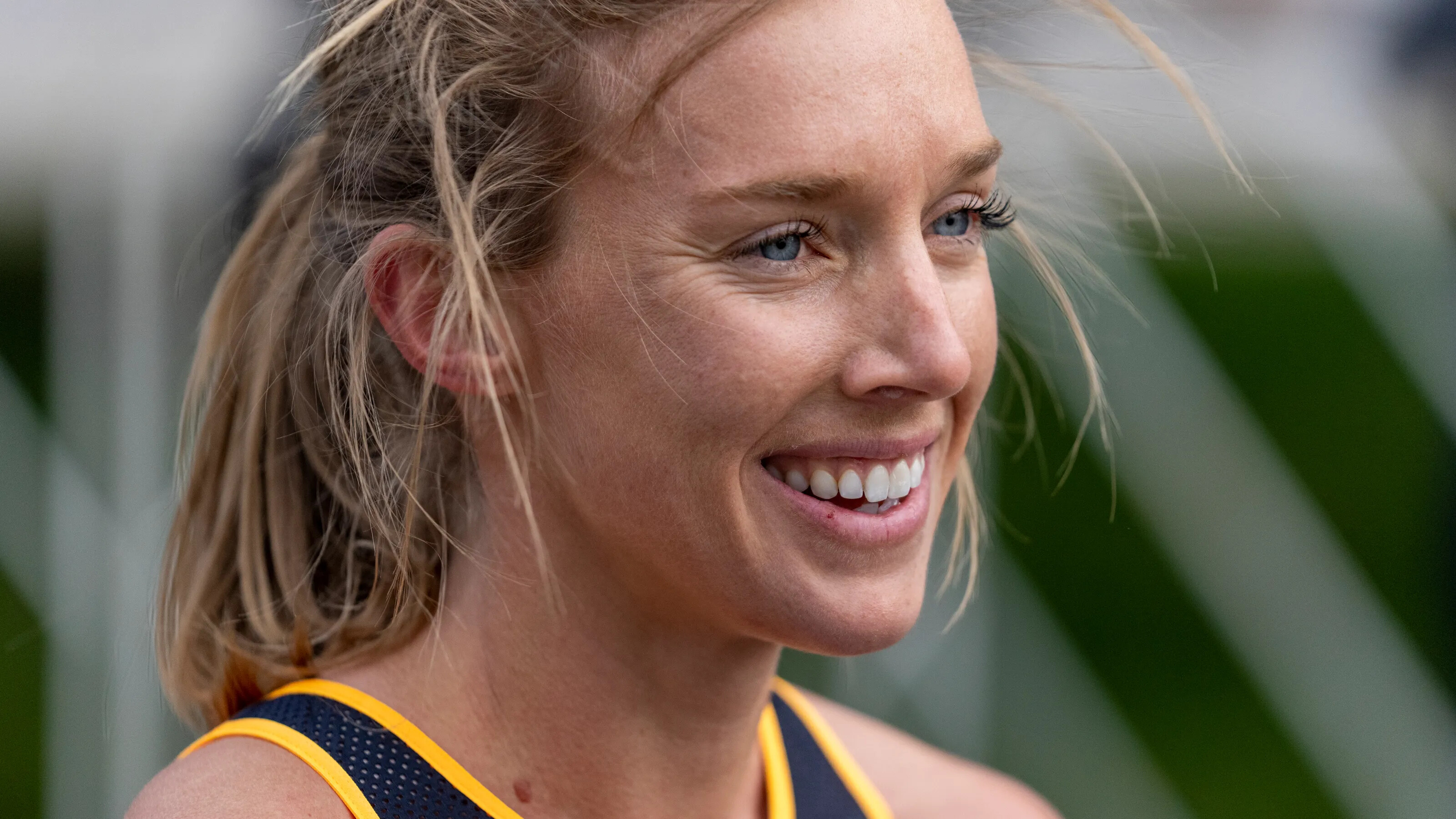
“Everything’s been better, all the long runs, all the tempos, and actually my long interval workouts, those have actually been better than they’ve been before.”
When Sisson was asked to compare her fitness and buildup to the 2022 Bank of America Chicago Marathon where she broke the American record, she said:
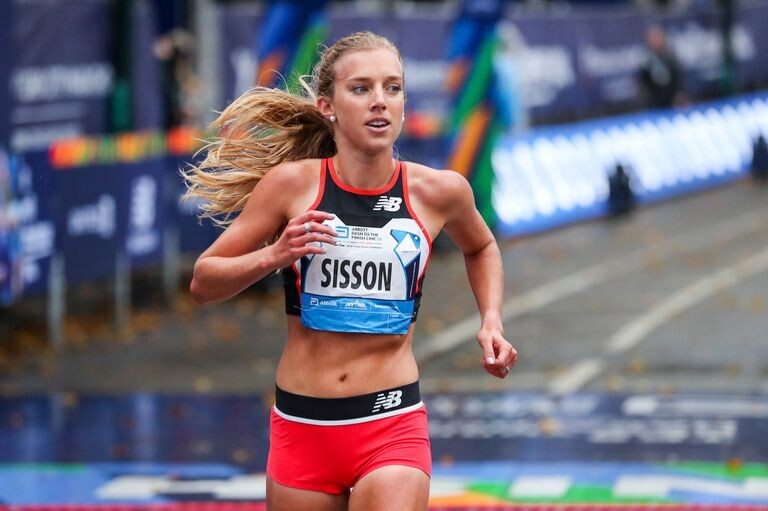
Everything’s been better, all the long runs, all the tempos, and actually my long interval workouts, those have actually been better than they’ve been before.
The workouts like on paper, like the times they’re all better. I think like I get confidence from that, but also just I’m feeling good and I’m feeling strong. So the training’s been good.
Sisson ran a 30:52 time trial on the roads in Arizona, which is just slightly slower than her official track PB of 30:49. Sisson, unlike Trials #2 contender Betsy Saina who ran a workout with 12 male pacers in Kenya, ran the workout all alone although her husband Shane was next to her on a bike. Sisson wasn’t blown away by almost setting a 10k PR in practice, as she said her track PR should be much faster. But she was pleased she could run that pace by herself. “I was happy that I was able to push myself that hard on my own,” she said.
Lessons from Chicago 2023
Chicago 2023 didn’t go as well as Chicago 2022 for Sisson, as she developed a side stitch later in the race and ran 2:22:09 for 7th place.
Sisson now views the Chicago 2023 setback as a positive experience as she learned from it. “We found some videos early on in Chicago and I just looked a little less fluid this past fall than I did in my 2022 Chicago. It was really subtle, like there was a little bit more movement in my upper body. So, we’re trying to like stay on top of that a bit more this time just to make sure nothing like a side stitch or anything else breaks down again,” she said, adding she worked with chiropractor John Ball.
Respect for the competition and the marathon distance
Sisson enters the Trials not only fit but healthy. When asked whether she worries about the other competitors in the race, she said, “It’s not that I don’t worry about my competitors. It’s not that I don’t think about them, but, I just feel like the marathon’s different than like a half marathon or a 10k. When I go into those races, I’m just trying to be as fit as I can and try to be fitter than my other competitors. But in the marathon, you are racing your other competitors, but you’re also racing the marathon itself. So it doesn’t matter, what your competitors are doing.”
“I feel fit and I feel healthy. With a marathon, that’s not everything, but those are two big parts of it. So I am happy with that. I’m happy with how training went,” Sisson said.
Getting a Real Olympic Experience
While Sisson made the 2020 Olympic in the 10,000m, she, like Aliphine Tuliamuk, said she missed out on the traditional Olympic experience because of the Covid protocols. She’d like to get another shot at it. “Being an Olympian is like the biggest dream,” she said of a goal that started when she watched Olympic gymnastics with her mom as a kid.
“I was so thankful they happened in 2021, but it was definitely a different Olympic experience than Olympics prior. So I’d love to get back there.”
Of Sisson’s 5 marathons, the only one that went poorly was the 2020 Olympic Marathon Trials in Atlanta where she dropped out.
Now with some time to reflect, Sisson has a better picture of what she think went wrong. “I think I went too hard in the buildup. I think my body, when I was standing on the start line, I think I was tired and, and I just didn’t realize it at the time because I was so new to the marathon, I thought it was just so normal to be tired, but there were things afterwards that I looked back on and there were signs that maybe I’d pushed it too hard in training.”
Sisson has backed off a little in her training this time. “So we did try to focus this time on getting good training in, getting in a good buildup, but just not overdoing it. I don’t wanna leave my race in training,” she said.
Sisson does believe she can do well in a hilly marathon. If she qualifies for Paris, she’ll get the chance as the Olympic course has a massive uphill heading to Versailles.
(02/02/24) Views: 120Weldon Johnson
2024 U.S. Olympic marathon trials: Conner Mantz and Fiona O'Keeffe race to victory
Mantz crossed the finish line just in front of training partner Clayton Young in the men's race. Fiona O'Keeffe dominated the women's race in a record-breaking debut marathon.
Conner Mantz and Fiona O'Keeffe raced to victory at the 2024 U.S. Olympic marathon trials on 3 February in Orlando to secure their spots on this year's Olympic team ahead of the Paris 2024 Games.
In the men's race, Mantz crossed the line in 2:09:05, directly in front of training partner and close friend Clayton Young, who crossed the line in second place just one second later. Young has also secured a quota for Paris having previously run the Olympic entry standard at the 2022 Chicago Marathon. Leonard Korir ran 2:09:57 to finish in third.

In her first marathon ever, O'Keeffe took a hugely impressive win in the women's race, breaking the U.S. Trials record with a time of 2:22:10.
She was comfortably in front of second-place finisher and American record holder Emily SIsson who ran through the line in a time of 2:22:42.
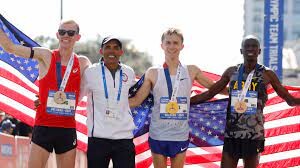
Dakotah Lindwurm couldn't believe her 2:25:31 third-place finish and looked around in shock as she crossed the line.
The largely fat course near Lake Eola Park was made up of an approximately 2.2-mile (five-and-a-half kilometer) loop followed by three eight-mile (12-kilometer) loops to the finish line. It was a sunny but humid 55˚F (13˚C ) at the 10:10 am start.
Women's winner Fiona O'Keeffe: "I'm so excited about this team"
“The goal has always been to make an Olympic team,” Mantz said in a post-race interview.
His mental strategy had been to run each mile for a different person - his mom, his dad, Clayton, with the final lap being for his wife.
“Let’s go to Paris, let’s make this happen,” second-place Young smiled after a close-to-ideal race that unfolded alongside his friend and fellow Utah native Mantz.
Zach Panning had led the way for the majority of the race before Mantz and Young took over the lead and pulled ahead with less than four miles to go. Panning fell back further as Korir took over in the final stretch to secure third.
In the women's race, O'Keeffe detailed the excitement she had felt with eight miles to go, having to remind herself not to "freak out."
"The past couple years I’ve been clawing my way through things," she said, before adding of her victory that she is now "so excited about this team."
Sisson, the women's American record holder in the marathon, has previous experience of the Olympics, having come 10th in the 10,000m at Tokyo 2020.
"I'm elated," she said, reflecting on making her second Olympic team in front of her friends and family.
Lindwurm was still in disbelief as she laughed with the press after the race, revealing ”I’m such an underdog… I was a walk on to my Division II team."
(02/03/24) Views: 117Sam Peene
Defending champion Bernard Koech returns to Hamburg
Defending champion and course record holder Bernard Koech will return for the 38th edition of the Haspa Marathon Hamburg on 28th April. The 36 year-old Kenyan, who improved the course best to 2:04:09 last year, will face very strong opponents in Germany’s major spring marathon.
Samwel Mailu of Kenya and Ethiopia’s Abdisa Tola, who both produced breakthrough performances in 2023, will challenge the defending champion. In Martin Musau there will be another former winner of the Haspa Marathon Hamburg returning to the race: The Ugandan was the winner in 2021.

“After two course records in a row we can look forward to another high quality men’s race. Bernard Koech, Samwel Mailu and Abdisa Tola are all capable of running world-class times on the fast course. We are happy that these three have chosen Hamburg for their spring marathon,“ said chief organiser Frank Thaleiser, who expects a total of around 12,000 marathon runners on 28th April. Online registration for the race is still possible at: www.haspa-marathon-hamburg.de
“I am looking forward to returning to Hamburg. Last year’s victory was a perfect comeback performance for me, because I had problems for some time and there were the Corona lockdowns as well,“ said Bernard Koech, who tied his two year-old personal best of 2:04:09 last year in Hamburg. However, after achieving his biggest career victory in that race the Kenyan was unlucky when he ran the Amsterdam Marathon in autumn. An injury forced him to drop out of the race. Looking ahead to his Hamburg return Bernard Koech said: “Although I broke the course record last year I believe that I can still run faster in Hamburg.“

A fast pace should suit Samwel Mailu, who wants to improve his personal best. The Kenyan newcomer, who is already 31 years old, stormed to a sensational course record of 2:05:08 despite warm weather conditions at the Vienna Marathon last spring. Later that year he produced another exceptional performance. Added to the Kenyan team at very short notice Samwel Mailu took the bronze medal at the World Half Marathon Championships in Riga, Latvia. “I chose Hamburg for my spring marathon because of the fast course. Hopefully I can improve my current 2:05personal best to 2:04,“ said Samwel Mailu.
23 year-old Ethiopian Abdisa Tola will be another top contender on 28th April. The younger brother of Tamirat Tola, the World Marathon Champion from 2021 and current New York Marathon winner, ran a stunning marathon debut a year ago: Abdisa Tola won the competitive Dubai Marathon in 2:05:42.
Besides Bernard Koech there will be another runner in the elite field who has already won the Haspa Marathon Hamburg: Martin Musau of Uganda took the race with 2:10:15 in 2021, when the fields were much reduced due to the pandemic. It was last year in Hamburg, when Musau improved to a fine 2:08:45 and finished in seventh position.
(02/05/24) Views: 113Emmanuel Wanyonyi says his main focus is on the Olympic Games
Youngster Emmanuel Wanyonyi has insisted that his main focus is on the Olympic Games and hinted at possibly missing the All-African Games in Accra, Ghana.
Reigning World 800m silver medalist Emmanuel Wanyonyi is not resting on his laurels as he seeks to qualify for the Olympic Games scheduled for Paris, France later this year.
After a great start to his season at the Sirikwa Classic Cross-country, Wanyonyi could not stop emphasizing how the Olympic Games mean a lot to him and why he wants to make his maiden appearance at the event.
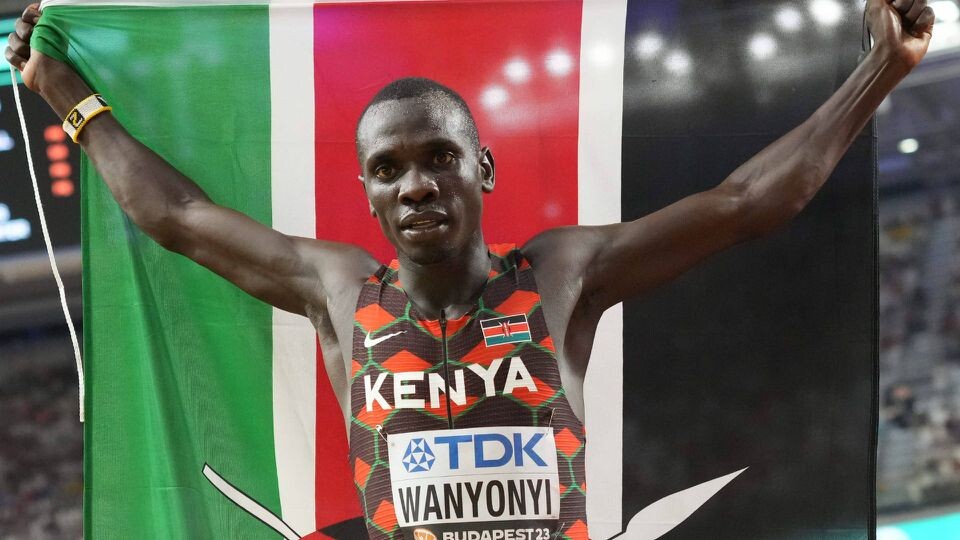
“I want to compete at this year’s Olympics because that is such a huge event and it only comes after every four years,” Wanyonyi said.
As he prepares for the global bonanza, Wanyonyi is slowly sharpening his claws through training extensively as he plans on where to open his track season.
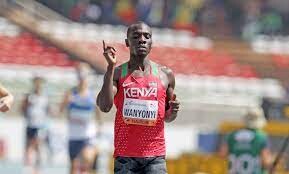
He also expressed uncertainty ahead of the All-African Games in Accra, Ghana, noting that his body is yet to pick up well.
“I want to compete at this year’s Olympics because that is such a huge event and it only comes after every four years,” Wanyonyi said.
As he prepares for the global bonanza, Wanyonyi is slowly sharpening his claws through training extensively as he plans on where to open his track season.
He also expressed uncertainty ahead of the All-African Games in Accra, Ghana, noting that his body is yet to pick up well.
“I want to compete at this year’s Olympics because that is such a huge event and it only comes after every four years,” Wanyonyi said.
As he prepares for the global bonanza, Wanyonyi is slowly sharpening his claws through training extensively as he plans on where to open his track season.
He also expressed uncertainty ahead of the All-African Games in Accra, Ghana, noting that his body is yet to pick up well.
(02/06/24) Views: 110Abigael Wuafula
Kelvin Kiplagat ready to follow Eliud Kipchoge's footsteps
Kelvin Kiplagat, an athlete from Eldama Ravine has opened up on his admiration for marathon king Eliud Kipchoge and World Half Marathon silver medallist Daniel Simiu.
Kelvin Kiplagat is keenly following in the footsteps of former world marathon record holder Eliud Kipchoge and World Half Marathon silver medallist Daniel Simiu.
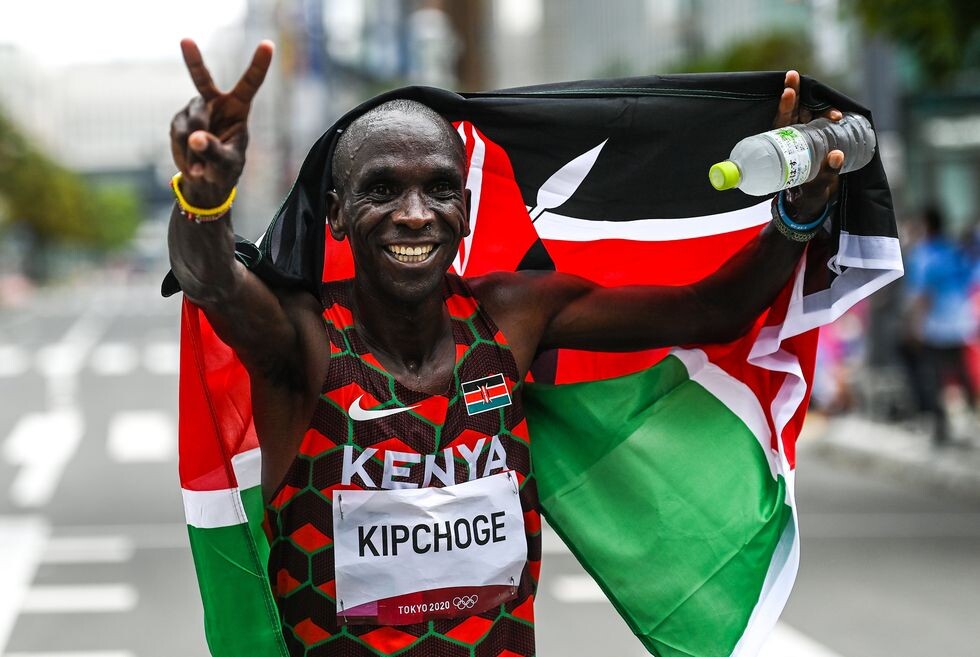
The Eldama Ravine-based athlete has been slowly making strides to match the achievements of his role models and he is surely on the track.
He was in action during the second Athletics Kenya weekend meet held at the Ulinzi Sports Complex where he dominated the men’s 10,000m. He was also in action in the first weekend meet and competed in the 3000m race where he finished fifth.
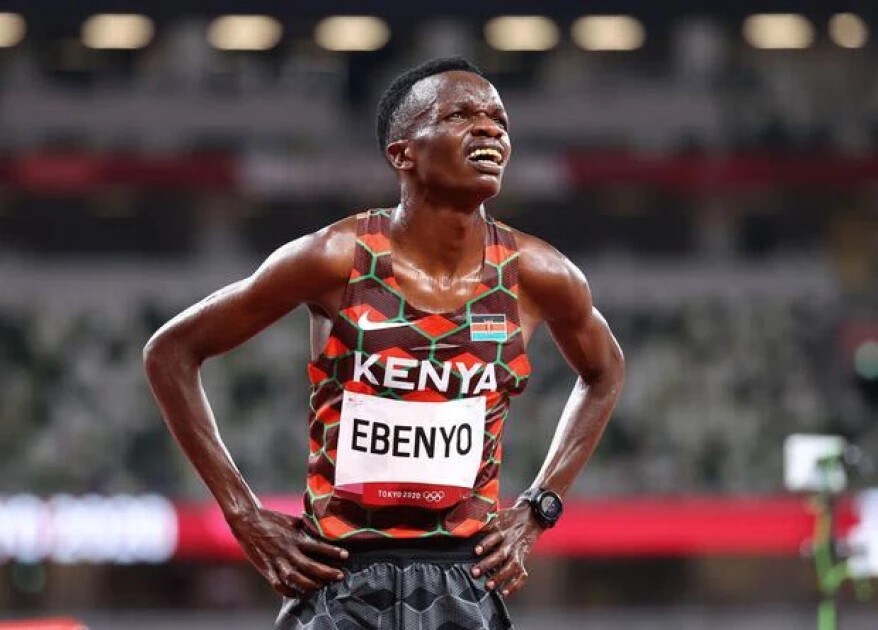
“I look up to my coaches for advice and they inspire me a lot. I also want to be like Eliud Kipchoge and Daniel Simiu who have cemented their places in the world of athletics,” Kiplagat told Pulse Sports.
He will be keen to make his debut in the national team this season, having set eyes on the Kip Keino Classic, the World Cross-country Championships, and the Olympic Games in Paris, France.
Making his first Team Kenya berth will be a dream come true since he has been burning the midnight oil to keep his hopes alive.
“I’m targeting the Kip Keino Classic, Olympics, and the Cross-country championships. I have never represented Kenya before and achieving that will mean that my hard work has finally paid off.
“I started running back in primary, in class seven and I competed up to county level. In class eight, I got to the regional levels and then when I joined secondary school, the Covid-19 pandemic came and disrupted everything,” he said.
But after the pandemic was over, Kiplagat put on his spikes once again and represented his school, Sinonin Secondary School, at the East Africa level where he finished second in the 5000m race.
(02/03/24) Views: 109Abigael Wuafula
Sara Hall after finishing 5th at the American marathon Olympic Trials
My heart is broken, but my love for this sport is unchanged. Man I missed doing that and loved being out there flying along again, flanked by an incredible group of women I love and respect so much.
Even when you come up short, there’s no better feeling than going all-in and all-out on something you love.
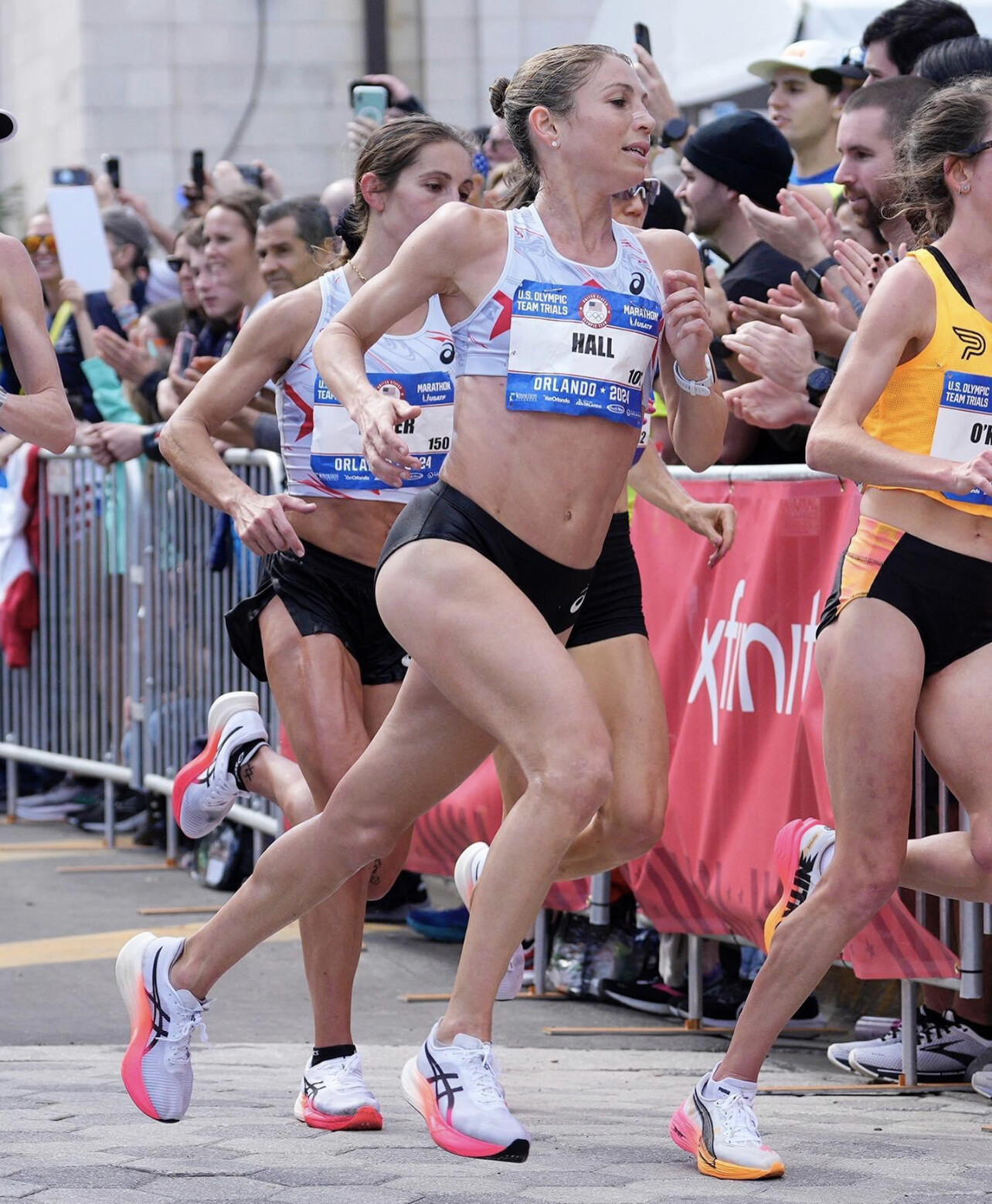
This one hurts more than any of the other 7, and yet I feel proud and have no regrets. Was in 3rd/could see 3rd the whole last lap as I battled through cramps. Never stopped believing, fought every step.
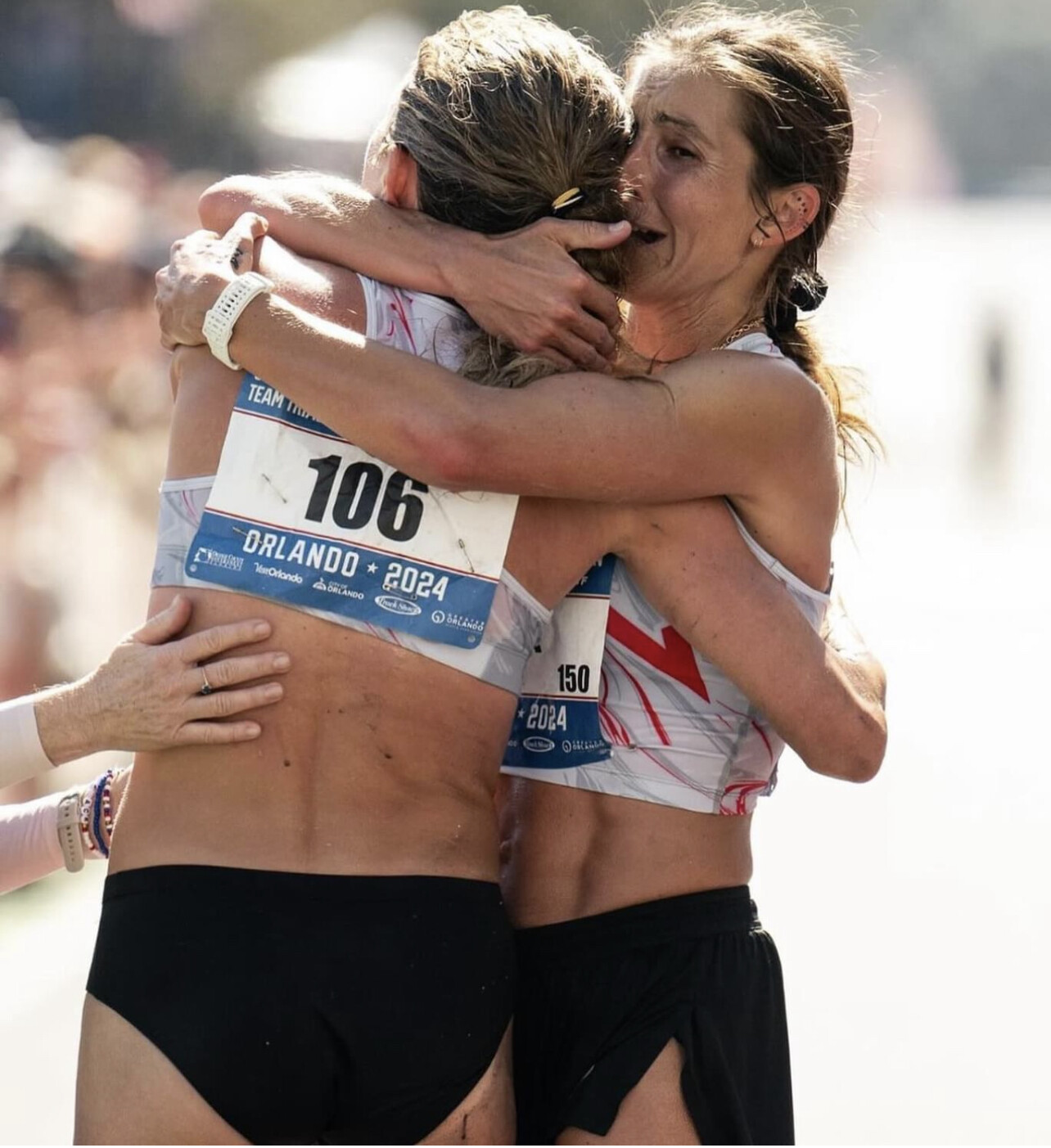
What a privilege to chase your dreams and have others believe in them with you. What incredible relationships I’ve made through this sport. I wouldn’t trade them for anything I’ve accomplished or could have accomplished.
Thanks for believing with me. The story continues.
Congratulations to our amazing team who are going to represent so amazingly in Paris!
(02/05/24) Views: 107
Sara Hall
Kibiwott Kandie and Ruth Chepngetich will lead strong fields to the Barcelona Half Marathon
Kibiwott Kandie and Ruth Chepngetich will lead strong fields to the Barcelona Half Marathon with the aim of shattering the course records.
The race organizers of the 34th Barcelona Half Marathon have expressed their thrill ahead of the event set for Sunday February 11 with more than 28,000 confirming participation in the largest half marathon in Spain and the second largest in Europe.
The organizers have also expressed interest in achieving new course records in both the men’s and women’s races. The men’s course record currently stands at 58:53 while the women’s is 1:04:37.
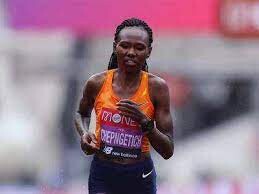
They will be banking on the 23 international elite athletes who will be competing for the top prize. In the men's field, Kibiwott Kandie stands out.
The three-time Valencia Half Marathon champion and former world record holder over the distance will be aspiring for a podium finish.
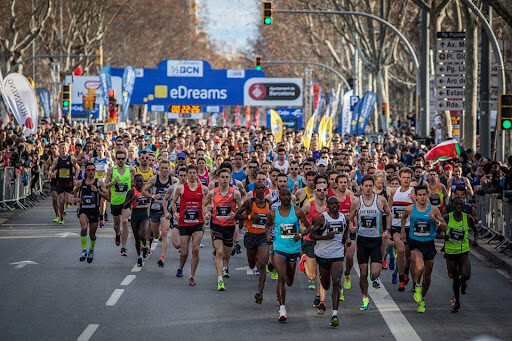
Also seeking for top honors will be Prague Half Marathon winner Philemon Kiplimo, Mathew Kimeli (58:43), and Hillary Kipkoech (59:22).
Tanzania’s Gabriel Geay will also be in the mix with the hope of having a great build-up ahead of his return to the Boston Marathon.
In the women’s race, the rival to beat will be two-time Chicago Marathon champion Ruth Chepngetich. She is the 2019 World Marathon champion and also holds the fourth fastest time over the distance.
Her main opponent will be her compatriot Joyciline Jepkosgei, runner-up in the world half marathon in 2018 and who already ran the Mitja de Barcelona achieving a personal best of 1:04:46.
The formidable duo will be joined by the Ethiopian Senbere Teferi and another Kenyan, Gladys Chepkurui, both with achieving under one hour and six minutes.
(02/02/24) Views: 106Abigael Wuafula


